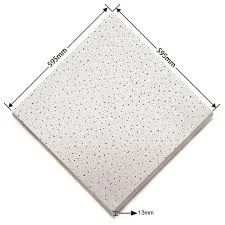Dec . 06, 2024 16:33 Back to list
Installing T-Bar Ceiling Grid A Step-by-Step Guide for Beginners
How to Install T-Bar Ceiling Grid A Step-by-Step Guide
Installing a T-bar ceiling grid can seem like a daunting task, especially for those who may not consider themselves handy. However, with the right tools, materials, and a bit of guidance, you can create a beautiful and functional drop ceiling in your space. This article provides a detailed step-by-step guide to help you successfully install a T-bar ceiling grid.
Materials and Tools Needed
Before you begin, ensure you have all the necessary materials and tools at hand
Materials 1. T-bar grid system including main tees, cross tees, and wall angles. 2. Ceiling tiles (compatible with your grid). 3. Drywall screws or anchors (if attaching to drywall). 4. Wire hangers (for supporting the grid). 5. Ceiling tile cutter (or utility knife).
Tools 1. Measuring tape. 2. Level. 3. Chalk line. 4. Drill. 5. Screwdriver. 6. Safety goggles.
Step 1 Measure the Space
Begin by measuring the dimensions of the room where the T-bar ceiling grid will be installed. Take note of any obstructions (like HVAC ducts or pipes) that might affect your grid layout. It's critical to plan the grid system carefully to avoid complications later on. Use a chalk line to mark the desired height of the ceiling. Typically, you’ll want the bottom of the grid approximately 4-6 inches lower than the existing ceiling to accommodate insulation or utilities.
Step 2 Install Wall Angles
Using your level, install wall angles around the perimeter of the room at the height you marked. Look for the stud locations as you go; you want to secure these angles directly to the studs if possible. Attach the wall angles with drywall screws or anchors, ensuring they are perfectly level all the way around. This will serve as the support for your T-bar grid system.
Step 3 Hang Main Tees
how to install t bar ceiling grid

The grid's main structure consists of long T-shaped pieces known as main tees. They should be spaced 4 feet apart, but always refer to the specific guidelines for the grid system you are using. Use the wire hangers to suspend the main tees from the existing ceiling. Attach the wire hangers to the ceiling joists or beams above, leaving enough slack to adjust for level. Use a level to ensure that the main tees are even and securely fasten them at the appropriate intervals. Typically, every 4 feet will suffice.
Step 4 Install Cross Tees
Next, insert the cross tees into the main tees. These shorter tees should fit snugly between the main tees and will form the framework for the ceiling tiles. Depending on the grid system, you may need to cut some of the cross tees to fit within the grid layout. Be sure to leave spaces for any ceiling lights or ventilation covers as necessary.
Step 5 Level Everything
Once you have both the main and cross tees installed, inspect the layout for any unevenness. Adjust the wire hangers or the tees as needed to ensure everything is level and aligned correctly. Remember, a properly aligned grid is crucial for a professional-looking finished ceiling.
Step 6 Insert Ceiling Tiles
Now comes the most satisfying part installing the ceiling tiles. Choose tiles that fit your aesthetic preferences and simply place them into the grid openings. If necessary, use a tile cutter or utility knife to trim the edges for a perfect fit. Make sure that each tile sits securely in the grid without any gaps.
Step 7 Final Adjustments
After placing all the tiles, take a moment to check for any visible flaws. Ensure that all tiles are seated evenly and that the grid frame is still level. Make any necessary adjustments before finishing the project.
Conclusion
Installing a T-bar ceiling grid requires careful planning and execution, but the results can significantly enhance the aesthetic appeal of your space. With proper measurements, level installation, and a bit of patience, you will create a stunning drop ceiling that not only looks great but also provides practical benefits, such as sound insulation and easier access to wiring or ductwork. With this guide, you are well on your way to transforming your room with a new ceiling grid. Happy DIY-ing!
-
Quality Ceiling Trap Doors & Access Panels | Easy & Secure AccessNewsAug.30,2025
-
Durable Ceiling T Grid Systems | Easy InstallationNewsAug.29,2025
-
PVC Gypsum Ceiling: Durable, Laminated Tiles for Modern SpacesNewsAug.28,2025
-
Pvc Gypsum Ceiling Is DurableNewsAug.21,2025
-
Mineral Fiber Board Is DurableNewsAug.21,2025
-
Ceiling Tile Clip Reusable DesignNewsAug.21,2025







